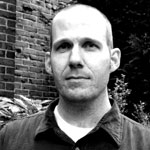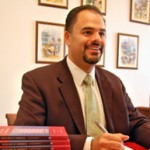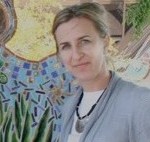 As the summer months draw to a close, we’ve turned again to a handful of our contributors, asking: What are the best books and essays on religion, secularism, and public life that you’ve come across this summer? What are you most looking forward to reading in the near future?
As the summer months draw to a close, we’ve turned again to a handful of our contributors, asking: What are the best books and essays on religion, secularism, and public life that you’ve come across this summer? What are you most looking forward to reading in the near future?
Richard Amesbury, Associate Professor of Ethics, Claremont School of Theology; Associate Professor of Religion, Claremont Graduate University
Jason Bivins, Associate Professor of Religious Studies and Associate Head of the Department of Philosophy and Religious Studies, North Carolina State University
Edward E. Curtis, IV, Millennium Chair of the Liberal Arts and Professor of Religious Studies, Indiana University-Purdue University Indianapolis
Tracy Fessenden, Associate Professor of Gender and Religion, Arizona State University
Elizabeth Shakman Hurd, Assistant Professor of Political Science, Northwestern University
David Kyuman Kim, Associate Professor of Religious Studies and American Studies, Connecticut College; SSRC Senior Advisor and Editor-at-Large for The Immanent Frame
Cecelia Lynch, Professor of Political Science and Director of the Center for Global Peace and Conflict Studies, University of California, Irvine
John Lardas Modern, Assistant Professor of Religious Studies, Franklin & Marhsall College
Justin Neuman, Assistant Professor of English, Yale University
John Schmalzbauer, Associate Professor of Religious Studies and Blanche Gorman Strong Chair in Protestant Studies, Missouri State University
Diane Winston, Knight Chair in Media and Religion, Annenberg School for Communication, University of Southern California
______
 Richard Amesbury, Associate Professor of Ethics, Claremont School of Theology; Associate Professor of Religion, Claremont Graduate University
Richard Amesbury, Associate Professor of Ethics, Claremont School of Theology; Associate Professor of Religion, Claremont Graduate University
One of the best books I read over the summer was William T. Cavanaugh’s The Myth of Religious Violence, which argues that it is by constructing “religion” as inherently divisive and prone to violence—as something to be quarantined, expelled, or defeated by means of state power—that the secular state legitimates itself. Violence is projected outward, onto the barbarians outside the wall, thereby deflecting attention from the violence inherent in the nation-state itself.
In Walled States, Waning Sovereignty, another of the books I read this summer, Wendy Brown argues that the gradual detachment of sovereignty from the nation-state under conditions of globalization motivates increasingly aggressive appeals to theological power. But since the state cannot contain the religions it mobilizes—these are generally transnational, breaching the very borders the state seeks to defend—such appeals only hasten the erosion of its sovereignty.
Is “religion” the invented problem to which the nation-state claims to provide the solution—something to be walled out? Or is it the very ground of the state’s (contested) legitimacy—something to be walled in? If “religion” functions ideologically as both the imagined exterior of the “secular” state and the imagined interior of its national life, it should come as no surprise that debates over the proper “place” of this protean formation show no sign of abating.
______
 Jason Bivins, Associate Professor of Religious Studies and Associate Head of the Department of Philosophy and Religious Studies, North Carolina State University
Jason Bivins, Associate Professor of Religious Studies and Associate Head of the Department of Philosophy and Religious Studies, North Carolina State University
Another summer, and another level of madness is revealed in American public life. Perhaps inevitably, given my research interests, I have responded to this summer din by making less time for my explorations of jazz and American religions, turning again to the discursive formations of American political religions (okay, not completely: I also conducted immensely rewarding interviews with George Lewis, Ned Rothenberg, Ellery Eskelin, and Ishmael Wadada Leo Smith, among others). In my attempts to elaborate a genealogy of the rhetorics of persecution and victimizations in political religions, I have immersed myself in David Barton’s manifestos, James Dobson’s jeremiads-cum-child-rearing manuals, and anti-Sharia statutes. But when not watching Barton’s video chats about Founder piety and reading Islamophobic legislation, my thinking about technologies, assertions of victimization, information densities, and emotions has been stimulated greatly this summer by several sources.
Nearly two years after Mary-Jane Rubenstein recommended Michel Serres’ Genesis to me, I finally got around to this wondrous meditation on noise, multitude, and reason. Occupying a genre all its own, Serres’ slim volume theorizes turbulence, tombs, crowds, and apparitions, all of which helps give shape and language to the sheerly overwhelming experience of living in our common din. Nearly as suggestive was Lauren Berlant’s The Female Complaint, which I was also long overdue to read. A dazzling study of how “[a] certain circularity structures an intimate public,” Berlant reads the complex proximity of agonisms and affective space, fantasies of normalcy and blaring outrage, suffering and sentimentality. But perhaps most provocative, and unexpectedly so, was my latest rereading of Melville’s Billy Budd and Other Stories. We know, of course, of Melville’s abiding preoccupation with metaphor and illusion as the engines of our self-understanding. But as I pondered Rick Perry’s prayers, Michelle Bachmann’s heated promise to reduce gas prices to two dollars a gallon, and the fervent imaginations of Barack Obama’s demoniac misdeeds that seem now ubiquitous, I was entranced by “The Piazza” and “The Encantadas” specifically. We read of illusions, as sailors push away from social convention—and the obligations of shared space and vision—into the realm of the fantastic. Indeed, one of these anonymous sailors says to the exotic, perplexing Marianna, “Yours are strange fancies,” to which Marianna replies, “They but reflect the things.” And of these fancies, we read in “The Encantadas” of how “the stage of politics in this unhappy nation may be somewhat imagined, from the circumstances that all who were not of the body-guard were downright plotters and malignant traitors.” It is hard to avoid the truth that we live choked by the “strange fancies” of others, their very evident thingness the embodiment of the fantastic that defines us.
______
 Edward E. Curtis, IV, Millennium Chair of the Liberal Arts and Professor of Religious Studies, Indiana University-Purdue University Indianapolis
Edward E. Curtis, IV, Millennium Chair of the Liberal Arts and Professor of Religious Studies, Indiana University-Purdue University Indianapolis
Some of the books that I read this summer were for my fall course on Islam and Modernity. I breezed through sociologist Charles Kurzman’s new book, The Missing Martyrs: Why There Are So Few Muslim Terrorists. Kurzman writes an effective polemic for educated readers that simultaneously takes on the conservative/liberal belief that Muslim terrorism is a huge problem and the leftist argument that if the U.S. only changed its foreign policy there wouldn’t be any Muslim terrorism. I hope the book has the kind of impact to which it aspires in the world of the D.C. think-tank. Another of my books, Zachary Lockman’s Contending Visions of the Middle East, is a readable account of the ways that Orientalism has affected U.S. scholarship and foreign policy concerning Muslims and Arabs. In The Many Faces of Political Islam: Religion and Politics in the Muslim World, a book written primarily for students who don’t know much about Islam, Mohammed Ayoob debunks the idea that Islam is both religion and state, or din wa dawla, as many Islamists and orientalists argue. Most of the textbook uncovers the many differences of opinion, political strategy, and religious belief among self-proclaimed Islamic states Saudi Arabia and Iran, Muslim democracies Indonesia and Turkey, Islamic political parties Hamas and Hizbullah, and transnational Muslim organizations al-Qaeda and the Tabligh Jamaat. Finally, I read Anne Rasmussen’s Women, the Recited Qur’an, and Islamic Music in Indonesia, learning not only about women’s roles in performing Indonesian exceptionalism and religious nationalism, but also delighting in the Islamic music and Qur’anic recitations that she both analyzes and gives examples of on the book’s website.
______
 Tracy Fessenden, Associate Professor of Gender and Religion, Arizona State University
Tracy Fessenden, Associate Professor of Gender and Religion, Arizona State University
I spent several days in early June packing up my office for a move across campus, and how unexpectedly strange an experience that turned out to be, how oddly predictive of the plots I’d go on to download as fiction for the rest of the summer. The new space was more welcoming but smaller, with bigger windows and fewer shelves, so the task at the outset seemed to be to set aside the books I could do without. But soon it became to decide what I could possibly justify keeping: those yellowed paperbacks of Husserl and Kierkegaard, with my teenaged annotations (so true!!) in ballpoint? Decades of print journals? The doorstop-OED, complete with magnifying glass, that everyone I’d known in grad school had scored with a book club membership years earlier? Concordances, articles, definitive editions: everything that had not become interred in the era that produced it seemed now to be had by clicking. Then there was all the other paper: essays and exams that went unclaimed for years, lecture notes in longhand, drawers of manilla files. And the miscellaneous scraps I shook from the spines of old books: postcards, invitations, handwritten notes, souvenirs less of particular connections than of the ways that almost all of us have stopped communicating. Some universities now have a ponderous designation, “brick-and-mortar,” for classes that actually take place with real people in a room, as though the whole face-to-face business had become irremediably airless and fraught. What couldn’t be found or done more easily, more deftly, online? A lot of us were moving out of the building at the same time, and the hallways became nearly impassable with high, haphazard stacks of all we were discarding. Thwack. Thwack. Thwack. We got a little giddy with it. We’d started the work, some of us, with headphones on, but soon were cranking up the dusty speakers we’d probably also leave behind.
The novels I finally fired up on my Kindle to read on vacation—Gary Shteyngart’s Super Sad True Love Story, Jennifer Egan’s A Visit from the Goon Squad, Jonathan Franzen’s Freedom, and Dana Spiotta’s Stone Arabia—were ripped straight from the best-of lists I’d scanned quickly while packing. It’s meant as description, not detraction, to say that each of these books somehow seemed to blur into the other three, in much the way that Egan’s loosely interlinked chapters come by the final pages to occupy the same, dazzling novel. A character in one book could plausibly go tripping into any other, blink a few times, and find himself in the same perilous mash-up, the shared predicament, to paraphrase Zadie Smith, of 1.0 humans trying to make sense of a 2.0 world. Even the soundtrack across three of the four is nearly the same: the music of the last five decades—its genius, its all-senses-of badness, and the often seamy business of selling it—belongs to these novels not only as background but as protagonist, anti-hero, and driver of plots, a token of resilience and a cautionary tale, a carrier throughout of the otherwise muted fear that what was happening to music post-Napster was what would happen to literature, was what had already happened to life.
Amy Winehouse was closer to my daughter’s age than mine, but the circa-1969 details of her untimely, drug-addled demise fit themselves much too easily into this story of faded hipsters stumbling, badly, through the detritus of now. And maybe it was the afterlife of all those discarded volumes, but the news of her death in July somehow, weirdly, brought Paul Tillich to mind, namely his essay on the creative and form-shattering dialectic of the demonic in The Interpretation of History. From halfway through Stone Arabia, it looked as though Amy Winehouse’s demons, which included her every formidable gift and talent, finally took the measure of her 2.0 fame—the Glee renditions, the parade of celebrity fluff who would go on to tweet their respects—and said, as she’d said, What kind of fuckery is this? And left the building, but not before trashing it.
Demons also have their way in Colin Dayan’s The Law is a White Dog: How Legal Rituals Make and Unmake Persons, the best case I’ve come across this summer for why scholarship—that rarefied, profligate discipline of wringing intelligibility from long attention—matters in a 2.0 world. The white dog of the title (a figure in Haitian voudou, and much else) joins other categories of liminal and “extraneous” beings whose legal dispossession gives haunting force to what Sarah Barringer Gordon recently invokes, more benignly, as The Spirit of the Law. Dayan shows how the law’s acts of “unmaking” persons—in the case of slaves, of prisoners who are executed, tortured, or held in solitary confinement, or of those declared civilly dead, among other examples—are reciprocally constituting insofar as those legally bereft of personhood animate the institutions that dwell on personhood as what may legitimately—legally—be recognized, threatened, or removed. Dayan places spiritual categories squarely alongside legal categories—ghosts and slaves, zombies and felons, sorcery and torts, demon possession and property law—to uncover a path of legal reasoning about personhood that reaches deeply and persistently into into a disavowed register of the “primitive” and the “irrational.” This may or may not fit your definition of methodological rigor. I hope you get to read it anyway.
______
 Elizabeth Shakman Hurd, Assistant Professor of Political Science, Northwestern University
Elizabeth Shakman Hurd, Assistant Professor of Political Science, Northwestern University
Several recent essays have challenged me to think in new ways about the intersections between international human rights, religious freedom, and power and authority in world politics. One that stands out is Noah Salomon’s “The ruse of law: Legal equality and the problem of citizenship in a multi-religious Sudan” in the new volume After Secular Law, edited by Winnifred Fallers Sullivan, Robert Yelle, and Mateo Taussig-Rubbo. Drawing on fieldwork in Sudan, Salomon challenges the working consensus among international non-governmental organizations and development agencies that “equality before the law” is a non-ideological solution to the problems faced by conflict-ridden and post-conflict societies. According to this consensus, if the law is procedurally sound it will serve as an apolitical, technical solution ontologically distinct from rule by force. Through detailed descriptions of his encounters with various groups in Sudan, including members of the government and allied Islamists (al-haraka al-islaamiyya, al-islaamiyuun), evangelist Salafis, and politically engaged Sufis, Salomon develops his argument that the “law, the institutions which promote it, and our relationship to them enfold deep ideological and political commitments which require a whole host of presumptions about justice and how best to achieve it.” Taking a cue from his discussions with the Salafis, he concludes with a question that is helpful in thinking about the politics of religious freedom and challenges of religious difference: “can we imagine a conversation about interreligious coexistence that does not rely on the liberal categories bequeathed by internationalist human rights discourse which we have seen, as in the case of ‘Umar al-Bashir’s speech, to be so inadequate?”
I recommend reading Salomon’s chapter together with other attempts to think critically about the global politics of human rights and the promotion of religious freedom, including Mathijs Pelkmans’ “The ‘Transparency’ of Christian Proselytizing in Kyrgyzstan”; Rosemary Hicks’ “Saving Darfur: Enacting Pluralism in Terms of Gender, Genocide, and Militarized Human Rights,” in Courtney Bender and Pamela Klassen’s After Pluralism: Reimagining Religious Engagement; and Talal Asad’s forthcoming essay “Thinking about Religious Belief and Politics” in the Cambridge Companion to Religious Studies, edited by Robert Orsi.
______
 David Kyuman Kim, Associate Professor of Religious Studies and American Studies, Connecticut College; SSRC Senior Advisor and Editor-at-Large for The Immanent Frame
David Kyuman Kim, Associate Professor of Religious Studies and American Studies, Connecticut College; SSRC Senior Advisor and Editor-at-Large for The Immanent Frame
In witnessing the hardening of hearts and of lives in this staggeringly difficult economy, and in anticipation of an acrimonious election season, I was hungry this summer both for clarifying analyses of the economic ills that have befallen us and for tonics to the culture of cynicism that has come to characterize contemporary political culture in America. On the economy, I looked, as I often do, to Joseph Stiglitz and his searing book Freefall: America, Free Markets, and the Sinking World Economy and Paul Krugman’s columns in The New York Times. It was a tougher go to find alloys for the political climate. It was good to have Jeff Stout’s Blessed are the Organized, a sobering and hopeful account of the political possibilities of grassroots organizing in America. In a darker vein, while I wouldn’t say that the apocalyptic short stories set in 2024 in McSweeney’s Issue 32, especially Adam Doerr’s “Memory Wall”, were cause for hope (but hey, we’re talking apocalypse), they did help in recalibrating my mood.
More on the literary front: I am working up an essay on the great American epic playwright Tony Kushner. Kushner has enormously interesting things to say about religion, politics, and the arts. With these concerns and the Rites and Responsibilities dialogue series I have been working on with TIF in mind, I was especially taken with the collection of interviews with Kushner Tony Kushner in Conversation. As my own thinking and research on religion, secularism, and the public sphere have increasingly moved to questions about memory, I have found myself reading what I would call “spiritual memoirs”—in particular, narratives of transformation and survival. Two of the best of the season were Gabrielle Hamilton’s Blood, Bones & Butter and Patti Smith’s remarkable Just Kids.
I write these brief words on the day slated for the dedication of the memorial to Martin Luther King, Jr.—the 40th anniversary of King’s “I have a dream” speech. That the dedication has been postponed due to the catastrophe named Hurricane Irene strikes me as tragically poignant for this American moment of dreams deferred. As much as I would wish it were otherwise, poverty, racism, and religious intolerance are very much still with us—a message spoken with moral clarity by Cornel West and Tavis Smiley. I suppose these conditions were the spurs that had me reaching again and again this summer for the prophetic words of James Baldwin, the master truth teller of an earlier toxic age, and the writings of Cornel, the leading figure of the American prophetic tradition of our time. Rereading The Fire Next Time, The Price of the Ticket, and other bracing essays found in the Library of America collection of Baldwin’s writings, as well as Prophesy Deliverance! and Democracy Matters were most welcome reminders about the power of the American prophetic tradition.
______
 Cecelia Lynch, Professor of Political Science and Director of the Center for Global Peace and Conflict Studies, University of California, Irvine
Cecelia Lynch, Professor of Political Science and Director of the Center for Global Peace and Conflict Studies, University of California, Irvine
Over the past month, I have found myself in the midst of daunting conversations (really debates, at times feeling more like attacks) with family members about religion and secularism, prompting me to return to Bill Connolly’s Why I am Not a Secularist as well as a rather disjointed but thoroughly enjoyable collection of other classics. The question at hand is to what degree secularism, like religion, is a social construction, and to what degree those who have never experienced anything they can call “religion” might reasonably be said to have been influenced by its systems of thought and practice. I have found in Connolly the intuitive understanding of the “visceral register” that I definitely relate to, as well as his description of both the stinginess of many religious models of thought and the constipation of quite a few secular ones.
The visceral register is something that, in my thinking about Christian, secular, Islamic, and traditional religious ethics and politics, constantly recurs. Jack Miles’ God: A Biography, which I have been perusing on and off for several months, exposes this monotheistic deity as navigating, like most of us, contradictory ethical impulses and worldviews, many of them quite visceral, to say the least.
Having grown up with an Irish Catholic consciousness, I continue to be fascinated by magical worlds and their relationships, potential or actual, to our received understandings of what is rational. Here on Martha’s Vineyard with my family (our vacation overlapping that of the very rational Obamas), I’ve taken up my sister-in-law’s copy of Frantz Fanon’s The Wretched of the Earth, which I’d never read cover-to-cover but am using in a co-edited book on humanitarianism in Africa, and was surprised to see the extent to which his revolutionary call for decolonization hinges on mobilizing the “supernatural, magical powers” of “the natives” (he writes on p. 56, “Believe me, the zombies are more terrifying than the settlers”). Like Emmanuel Dongala’s amazing novel, Johnny Mad Dog, about a ruthless Central African boy rebel which I read earlier in the summer, these books highlight the intertwined power of amulets and guns, exorcism and liberation, deities and justice. They also, like Miles and Connolly, show how the intertwined power of secular and religious possibility can be used for very different political ends.
______
 John Lardas Modern, Assistant Professor of Religious Studies, Franklin & Marhshall College
John Lardas Modern, Assistant Professor of Religious Studies, Franklin & Marhshall College
As summer ends I look forward to those books not gotten to. At the top of the pile: Gary Greenberg’s Manufacturing Depression: The Secret History of a Modern Disease, Pamela Klassen’s Spirits of Protestantism: Medicine, Healing, and Liberal Christianity, and the strange little essays collected in Cosmograms, edited by Melik Ohanian and Jean-Christophe Royoux.
In retrospect, however, this has been a good summer for reading around the edges—Philip K. Dick’s Ubik, Jennifer Egan’s A Visit from the Goon Squad, and the tawdry but compelling Love Sex Fear Death: the Inside Story of the Process Church of the Final Judgment by Timothy Wyllie. David Foster Wallace’s A Pale King has become an addiction—page after page, word after tangential word that will transfix and transform (I’m serious about this) one’s orientation toward tedium:
They deplaned and descended and collected the carry-on bags that had been confiscated and tagged at Midway and now rested in a motley row on the wet tarmac beside the airplane, and stood then briefly en masse on a complexly painted cement expanse while someone with orange earmuffs and clipboard counted them and then crosschecked the count with a previous count undertaken at Midway.
And I would be remiss if I did not mention the albums in constant rotation this summer: a sonic history of Detroit on 3 LPs, The Dirtbombs’ Party Store (2011); Jesus-funk by way of Bermuda, Jimmy Mamou’s “I Am” He Said (1976); and finally, the All Saved Freak Band’s For Christians, Elves and Lovers (1976), an inspired example of the understudied genre of Tolkien-coloured evangelical psychedelica.
______
 Justin Neuman, Assistant Professor of English, Yale University
Justin Neuman, Assistant Professor of English, Yale University
The ten year anniversary of the September 11 terrorist attacks will no doubt elicit a wide range of retrospection and memorialization. I would like to use the occasion and this forum to suggest taking a look back at a novel from 2006, Jess Walter’s The Zero, a darkly comic meditation on the psycho-social aftermath of September 11. Despite a few favorable reviews and a National Book Award nomination, the novel failed to gain the attention it deserves on what has become a rapidly growing shelf of 9/11 novels. The Zero depicts the recovery effort and nascent homeland security initiatives through the eyes of Brian Remy, a police officer working at “The Zero,” the novel’s disaster-worker patois for the World Trade Center site, on the day of the attacks. After September 11 Remy sees “flashers and floaters” that dance in his field of vision, echoing the “scraps of paper blown into the world” from the towers, and suffers from a dissociative disorder: he consciously experiences only brief flashes of his own life, amnesic episodes rendered formally through narrative fragmentation.
Walter’s adherence to his formal conceit may feel clunky at times—sections break off and commence mid-sentence—but the novel’s agile plot and wry echoes of noir genre fiction more than make up for the rigid form. At the opening of the novel, readers encounter the protagonist as he awakens on September 12, 2001 nursing a head-wound that may or may not have resulted from a failed suicide attempt. In this and subsequent fragments, Remy must reconstruct with forensic evidence the plot of his own life as he plunges deeper and deeper into the paranoid labyrinth of intelligence, law enforcement, and counterterrorism. Brian Remy is no Jason Bourne, fortunately, but the book reads with the tempo of a thriller, albeit one threaded with references to Camus, Kafka, and Robbe-Grillet.
For a satirist, the narratives about September 11 circulated by the government and media offer a rich bounty of targets, one largely untapped under a climate of self-censorship in the wake of the atrocities, and Walter’s savage humor makes the most of these opportunities. The novel also wrestles bravely with the American addiction to trauma, a task as pertinent in 2011 as it was in 2006. In The Zero, trauma has become a new currency in a marketplace of disaster where a good story about the attacks “is like owning a good stock.” “Vicarious Trauma” becomes a billable line on an attorney’s invoice, and a caricatured psychoanalyst diagnoses Remy with PTSD, all evidence to the contrary be damned. The Zero leaves us with the unsettling implication that in the post-September 11 era we are all to an extent like Remy, our consciousness leaping like “smooth skipping stones,” as he philosophizes, “bounding across the surfaces of time.”
______
John Schmalzbauer, Associate Professor of Religious Studies and Blanche Gorman Strong Chair in Protestant Studies, Missouri State University
This summer I read about conservative philanthropists, religious colleges, and the spiritual left. Halfway through the summer, the three stacks started to talk to each other.
After devouring Kim Phillips-Fein’s Invisible Hands: The Businessmen’s Crusade Against the New Deal, I wanted to know more about Sunoco founder J. Howard Pew. A friend of John Birch Society founder Robert Welch (the inventor of the Junior Mint), Pew was an early advocate of libertarian economics. A conservative Presbyterian, he supported Christianity Today, Fuller Seminary, and Grove City College.
Ironies abound in the story of Spiritual Mobilization, a Pew-funded project briefly discussed in Darren Dochuk’s From Bible Belt to Sunbelt. Founded to introduce Protestant clergy to the principles of free enterprise, it became an outpost for metaphysical religion and psychedelic drugs. In Radicals for Capitalism, Brian Doherty provides the juicy details, noting the metaphysical influences on one of libertarianism’s most famous essays.
My summer reading got even weirder when the guru for Spiritual Mobilization showed up in two works that explore America’s “spiritual left,” Leigh Eric Schmidt’s Restless Souls and Don Lattin’s The Harvard Psychedelic Club. Part of the same social network as Timothy Leary and J. Howard Pew, mystic Gerald Heard lived “between the pigeonholes.”
Further muddying the waters, I read Founded by Friends: The Quaker Heritage of Fifteen American Colleges and Universities. Though I didn’t go looking for libertarians, they went looking for me. As fate would have it, the fifth president of Haverford College, Felix Morley wrote for Spiritual Mobilization. He also founded Human Events, once a home for anti-war conservatives. Quaker Henry Hazlitt was also a prominent libertarian.
All this suggests that we should be careful with our terminology. Sometimes the American right looks a lot like the spiritual left.
______
 Diane Winston, Knight Chair in Religion and Media, Annenberg School for Communication, University of Southern California
Diane Winston, Knight Chair in Religion and Media, Annenberg School for Communication, University of Southern California
The summer’s headlines, from the debt ceiling debate to the Rick Perry juggernaut, confirmed the determination of a religiously tinged, fervidly conservative movement. My summer reading revealed the depth, breadth, and longevity of its campaign.
Popular narratives date the wedding of the political right with the religious right to the late 1970s, when Washington D.C. operatives began cultivating Southern evangelicals like Jerry Falwell. It’s an East Coast story driven by Beltway insiders who operate from the top-down. But Darren Dochuk’s From Bible Belt to Sunbelt, Bethany Moreton’s To Serve God and Wal-Mart and Allan J. Lichtman’s White Protestant Nation complicate that picture. The authors describe networks of affinities based on conservative religion, anti-Communism, and free market economy that stretched from the Ozarks to Orange County. Looking back to the 1920s, 30s, and 40s, their books trace the crystallization of today’s conservative movement from its roots among itinerant Baptist preachers, suburban housewives, and newly minted entrepreneurs.
My late night and beach reading was similarly sobering. I’m a fan of dystopian young adult fiction because, I like to tell myself, it’s a window onto the spiritual imaginary of my daughter’s generation. This summer I tore through The Mortal Instruments, a four book series by Cassandra Clare that describes crushes, alliances, and familial dysfunction among demon-hunting humans, vampires, werewolves, and fairies. Unlike many young adult books I’ve read, the series directly addresses religion. A teenage Jewish vampire is burnt by a Star of David rather than a cross and star-crossed lovers debate a God who created soul-sucking monsters. Shaping and reflecting younger readers’ need for ritual, re-enchantment, purpose, and meaning, the books weave the same stories of righteous warfare, supernatural guardians, and the interplay of religion and secularism that mark American history. The difference is that histories describe what has been; fiction suggests what yet may be.











